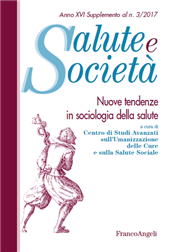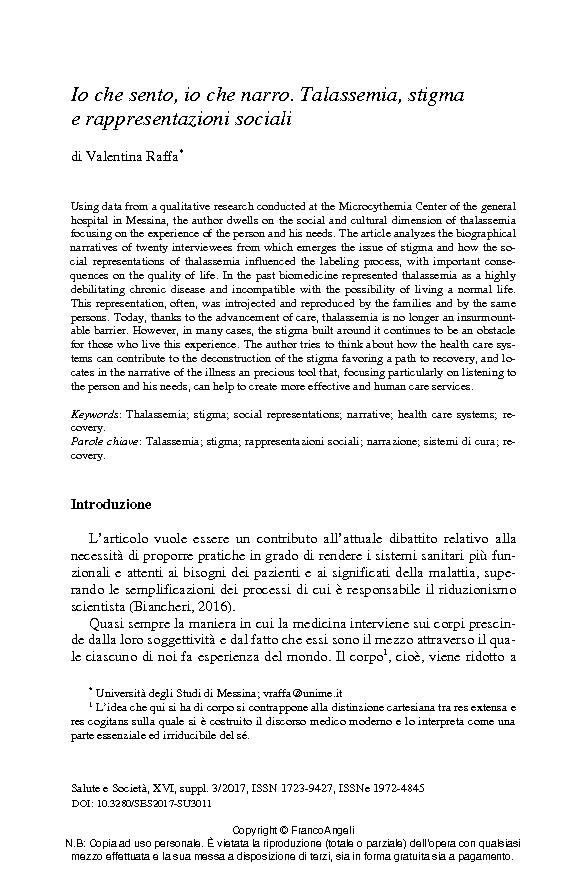Io che sento, io che narro : talassemia, stigma e rappresentazioni sociali
162-181 p.
Using data from a qualitative research conducted at the Microcythemia Center of the general hospital in Messina, the author dwells on the social and cultural dimension of thalassemia focusing on the experience of the person and his needs. The article analyzes the biographical narratives of twenty interviewees from which emerges the issue of stigma and how the social representations of thalassemia influenced the labeling process, with important consequences on the quality of life. In the past biomedicine represented thalassemia as a highly debilitating chronic disease and incompatible with the possibility of living a normal life. This representation, often, was introjected and reproduced by the families and by the same persons. Today, thanks to the advancement of care, thalassemia is no longer an insurmountable barrier. However, in many cases, the stigma built around it continues to be an obstacle for those who live this experience. The author tries to think about how the health care systems can contribute to.
the deconstruction of the stigma favoring a path to recovery, and locates in the narrative of the illness an precious tool that, focusing particularly on listening to the person and his needs, can help to create more effective and human care services. [Publishers' text].
Fa parte di
Salute e società : XVI, supplemento 3, 2017-
Articoli dello stesso fascicolo (disponibili singolarmente)
-
Informazioni
Codice DOI: 10.3280/SES2017-SU3011
ISSN: 1972-4845
PAROLE CHIAVE
- Talassemia, stigma, rappresentazioni sociali, narrazione, sistemi di cura, re-covery
- Thalassemia, stigma, social representations, narrative, health care systems, re-covery



